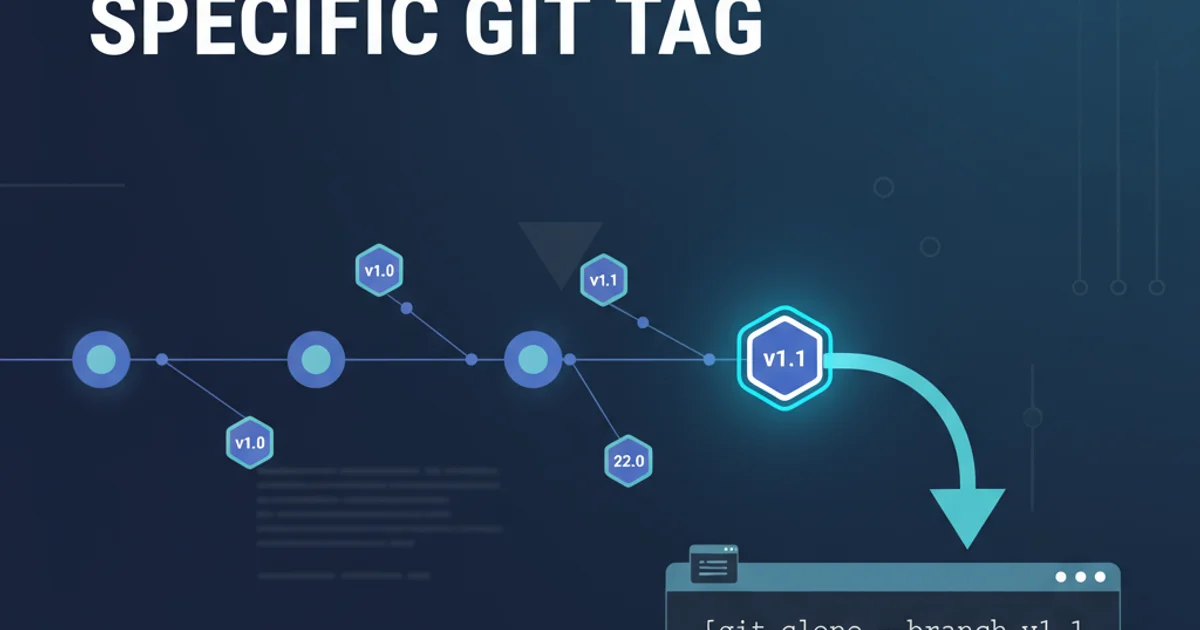How to clone a specific Git tag
Categories:
How to Clone a Specific Git Tag

Learn how to efficiently clone a Git repository to a specific tag, allowing you to work with a precise version of your codebase without cloning the entire history.
When working with Git, you often need to access a particular version of your project. While cloning the entire repository history is common, sometimes you only need the files as they existed at a specific tag. This approach can save time and disk space, especially for large repositories or when you're interested in a release version rather than the latest development state. This article will guide you through the process of cloning a specific Git tag, explaining the different methods and their implications.
Understanding Git Tags and Cloning
Git tags are like permanent bookmarks to specific points in your repository's history, typically used to mark release points (e.g., v1.0, v2.0). When you clone a repository, by default, Git fetches all branches and their entire history. However, if your goal is to get the exact state of the repository at a particular tag, you can optimize the cloning process. This is particularly useful for CI/CD pipelines, deploying specific releases, or examining historical versions without the overhead of the full repository.
flowchart TD
A[Start: Need Specific Tag] --> B{Clone Full Repo?}
B -- No --> C[Fetch All Tags]
C --> D[Checkout Specific Tag]
D --> E[Result: Tagged Version]
B -- Yes --> F[Clone Full Repo]
F --> G[Checkout Specific Tag]
G --> EDecision flow for cloning a specific Git tag
Method 1: Cloning and Checking Out a Tag
The most common and straightforward method involves cloning the entire repository first, and then checking out the desired tag. This ensures you have the full history available if you later decide to switch to a different branch or tag, or if you need to inspect the commit history leading up to that tag.
1. Clone the repository
First, clone the repository as you normally would. This fetches all branches and tags.
2. List available tags (optional)
To see all available tags, navigate into the cloned directory and run git tag.
3. Checkout the specific tag
Once you've identified the tag (e.g., v1.0.0), check it out. This will put your repository in a 'detached HEAD' state, meaning you're not on any branch, but directly on a commit.
git clone <repository_url>
cd <repository_name>
git tag
git checkout tags/<tag_name>
Cloning a repository and checking out a specific tag
git checkout -b new-branch-name tags/<tag_name>.Method 2: Shallow Clone with Depth 1 and Specific Tag (Advanced)
For very large repositories where you absolutely do not need the full history and only want the files at a specific tag, you can perform a shallow clone with a depth of 1. This significantly reduces the amount of data transferred. However, Git doesn't directly support cloning only a tag with depth=1 in a single command that also checks out that tag. You typically clone with depth 1, then fetch the specific tag, and then check it out. This method is more complex and might not always be necessary.
git clone --depth 1 <repository_url>
cd <repository_name>
git fetch origin tag <tag_name>
git checkout <tag_name>
Shallow cloning and then fetching/checking out a specific tag
--depth 1 means you will only have the latest commit of the default branch. If the tag you want is not the latest commit on the default branch, you will need to git fetch origin tag <tag_name> to get the tag's commit object before you can check it out. This method is generally more involved and often less practical than simply cloning the full repo and checking out the tag, unless disk space or network bandwidth is a critical concern.